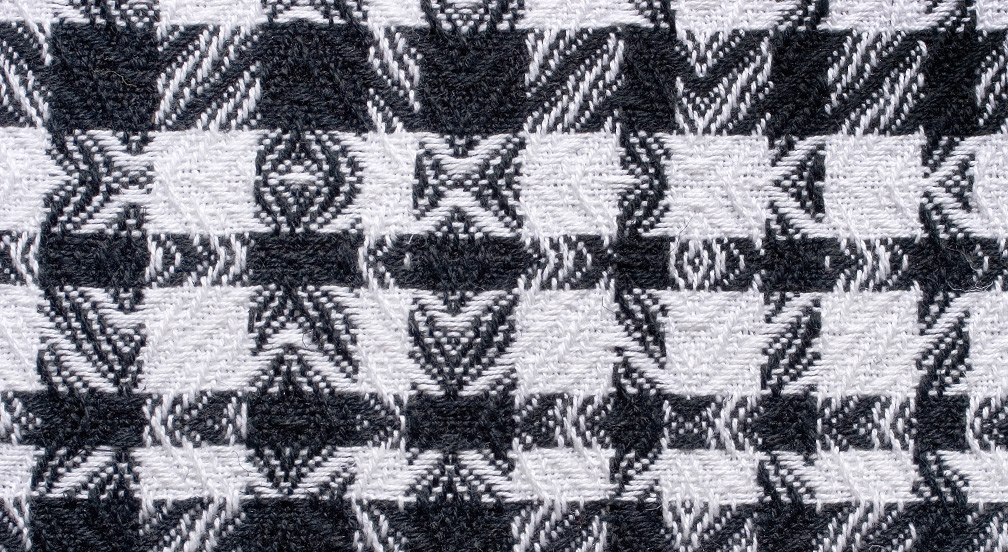

Chance and the fourth dimension
As a weaver Sytze Roos allows a certain measure of chance in his working methods.
The applied colour scheme is based on a combination of experience and intuition in bringing together the simplest (primary and secondary) and often strongly contrasting colours of natural materials. The indeed previously designed pattern (repeat) also contains an uncontrolled element based on non-repetition. So a certain measure of chaos is involved in the creative process, which results in effects in the final product which are unpredictable.
Here again the greatest possible simplicity is aimed at.
Although there is a basic idea it has not been predetermined where which thread will cross another one. All these crossings can be seen separately and get their own color by induction. Those looking intensely however will seen more than chance chaos.
Through the eyes of the viewer and in a way indefinable additional power the tension between chaos and the artist’s attempts to order it “a fourth dimension” is added.
The total equals more than the sum of the parts.
This aspect of the fabrics cannot been pinpointed but is visible indeed or rather sensible perceptible. The artist compares this with the two dimensional front view of e g a rectangular loaf of bread. From this point of view the third dimension is invisible but still present. In case of the fourth dimension this differs from person to person and probably moment to moment. Everyone observes in his or her own way.
To be able to apply chance opposite of arbitrariness which is humanly influenced in ist purest form a computer controlled loom is now often being utilized. At first the old chinese philosophy “i ching” was used to so to speak translate cosmic chaos into weaving movements on a dobby loom. Although a computer program written by a friend and programmer, naturally worked much faster for a while, a preference for the chinese method remained. Because in practise the results of both methods do differ.
The items are handwoven by the way, but the movements of the shafts are computercontrolled. This program allows the computer to choose the separate movements at random, and afterwards the viewer adds the fourth dimension to the finished product by ordering the chaos emerging as a result.
